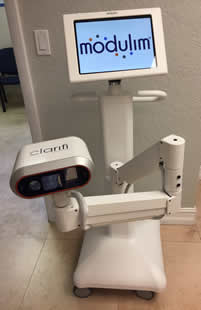
What is Clarifi Imaging System?
Clarifi Imaging System is a non-invasive, non-contact, and non-ionizing testing for the micro-vascular assessment for your circulation. It does not expose the patient to any harmful radiation. It is very easy to do and generates images in seconds giving you information about your circulatory problems.
How does it work?
Clarifi Imaging System is a non-invasive, non-contact, and non-ionizing testing for the micro-vascular assessment for your circulation. It does not expose the patient to any harmful radiation. It is very easy to do and generates images in seconds giving you information about your circulatory problems.
How does it work?
This system provides information about the delivery and extraction of oxygen to the tissues, which helps providers identify patients that are at risk for vascular complications. It also helps identify specific areas of compromised circulation before actual presence of ulcerations or other visible symptoms.
Clarifi imaging System gives a complete picture of the tissue health (tissue oxygenation and perfusion data) by mapping and quantifying 5 key micro-vascular biomarkers listed below as follows:
- StO2 is the tissue hemoblogin oxygen saturation
- HbO2 is the oxy-hemoglobin
- HbR is the deoxy-hemoglobin
- HbT1 is the superficial (papillary dermis) hemoglobin
- HbT2 is the deep (reticular dermis) hemoglobin
Oxygenation markers are StO2, HbO2, HbR and perfusion markers are HbT1, HbT2. Clarify system provides a color coded map of each of these 5 biomarkers.
How does Clarifi Imaging System differ from traditional circulatory tests such as dopplers / ultrasounds ?
It is important to note that traditional noninvasive circulatory tests, such as arterial doppler, ABI, TBI, provide information about the macro-vascular status of the large blood vessels. Clarifi Imaging system provides information about the micro-vascular status of the small blood vessels. Evaluating micro-vascular status is extremely important especially in conditions such as arterio-venous shunting in which the blood does not get into the capillary beds.
To get a more complete picture of a patient’s peripheral vascular health it is essential to asses both macro-vascular and micro-vascular systems. By doing so helps clinicians identify at risk patients before any visible signs of ulceration.





